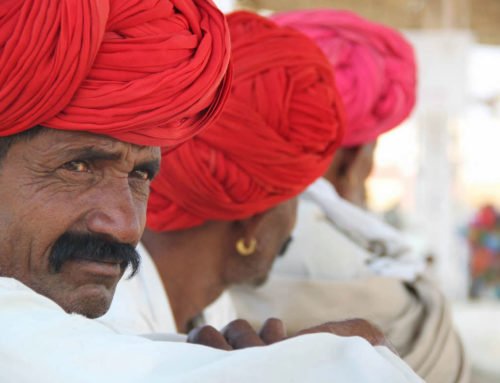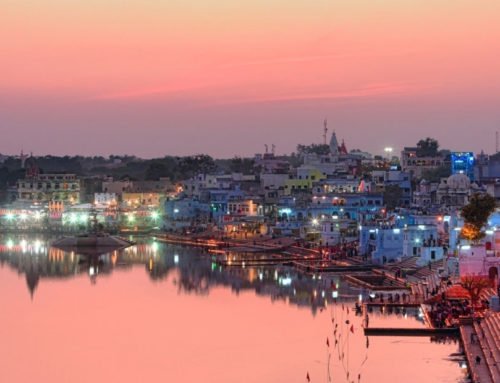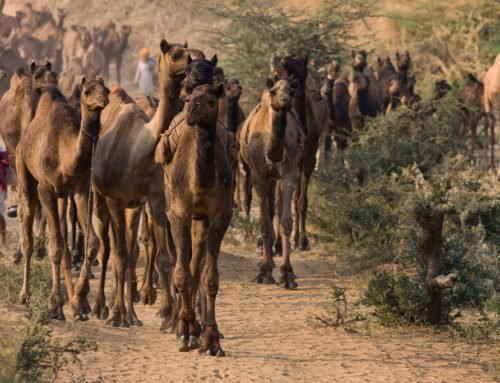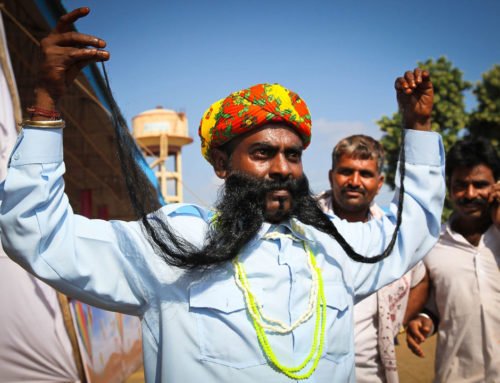Overview
- Main Attractions: Pushkar Camel Fair, Pushkar Lake
- Best Time to Visit: 2014 – October 30-November 6; 2015 – November 18-25; 2016 – dates to be announced
- Local Specialty: Pushkar Fair
- Travelled By: Bus
- Cost: $$
- Duration of Stay: 5 days
- Location: Rajasthan, India
Author Reviews[display_rating_item_results rating_form_id=”4″ rating_entry_ids=”1″ show_category_filter=”false” show_options=”true” result_type=”star_rating” preserve_max_rating=”true” show_title=”false” show_count=”false” ]
Total Rating: [display_rating_result rating_form_id=”4″ show_count=”false” show_rich_snippets=true] [accordions load=”1″] [accordion title=”User Reviews” last] [display_rating_item_results rating_form_id=”5″ show_options=”true” result_type=”star_rating” preserve_max_rating=”true” show_title=”false” show_count=”true” show_rich_snippets=true] [/accordion] [accordion title=”Add Review”][display_rating_form show_email_input=”true” show_comment_textarea=”true” show_name_input=”true” rating_form_id=”5″] [/accordion] [/accordions]
Summary
Lorem ipsum dolor sit amet, consectetuer adipiscing elit, sed diam nonummy nibh euismod tincidunt ut laoreet dolore magna aliquam erat volutpat. Ut wisi enim ad minim veniam, quis nostrud exerci tation ullamcorper suscipit lobortis nisl ut aliquip ex ea commodo consequat. Duis autem vel eum iriure dolor in hendrerit in vulputate velit esse molestie consequat, vel illum dolore eu feugiat nulla facilisis at vero eros et accumsan et iusto odio dignissim qui.
Pushkar: Our Experience
November 6th, 2013 (Day 1)
We arrived into Pushkar on a bus from Jaipur. It had taken us almost four hours in the bus, arriving into Pushkar at 1 pm. The bus trip was non eventful; we only stopped once at a roadside restaurant on the way. Dad had given us some Indian namkeen (fried, salty snacks) and some jhal chips (hot chips) which we snacked on along the way.
We were staying at Hotel Everest, so we called them to pick us up at the bus station.
Pushkar is a small, shanty town in the North Indian state of Rajasthan that comes alive during the Pushkar Camel Fair, held somewhere between late October and mid November. We had arrived a few days before the start of the Pushkar Fair to watch cattle trading which usually takes place a few days before the fair.
[singlepic id=4405 w=720 h=560 float=center]
It was past lunch time so we dropped our bags in our hotel room and went looking for lunch. On the Main Market Road, next to Brahma Ghat, we found a few street side restaurants specialising in local cuisine. While I had a plate of puris and sabji, Graham had some snacks – aloo samosa and a kachori.
[singlepic id=4409 w=720 h=560 float=center]
After lunch, we headed over to the fairgrounds to see the camels. The only camels we saw were tourist camels, but we did see a lot of horses in the fairgrounds. Some were being made to gallop around at full speed while others were being made to perform acrobatic tricks at the Pushkar Camel Fair.
[singlepic id=4410 w=720 h=560 float=center]
In the afternoon, we visited the main ghat in Pushkar, Brahma Ghat, to watch the pilgrims take a dip in the holy lake, and to enjoy the scenery and the atmosphere there. We had been at the ghat no longer than a couple of minutes when we were accosted by a so-called Hindu priest asking us to perform a puja offering. We nearly got roped into a scam but we managed to avoid it; however we had to leave the ghat immediately.
Read a review of our experience with puja scams at Pushkar Lake.
[singlepic id=4408 w=720 h=560 float=center]
There are 52 ghats around Pushkar Lake so we did find another ghat at the lake where it was quiet and we didn’t get accosted by any Hindu priests. The lake is said to have been created when a lotus was thrown by Lord Brahma which landed here. It is believed to be auspicious and pilgrims take a dip in the waters on Kartik Purnima, a Hindu religious festival associated with the full moon.
At the ghats, there were several cows looking for food. Cows are worshipped by the Hindus and are allowed to roam free on the streets. They are even fed by the locals left over food in the mornings.
The views across the lake were beautiful – the ghats surrounding the lake, people taking a dip in the lake and the temples in the background. The atmosphere was so serene that it seemed as if time had stood still. We just sat on the steps of the ghat and enjoyed the views and stillness of the afternoon.
[singlepic id=4411 w=720 h=560 float=center]
It was late afternoon when we decided to go on a walking tour around Pushkar. We had read about the Pushkar temples so we decided to find them and other attractions that Pushkar had to offer.
We had seen several temples around Pushkar Lake as well as what looked like a gurudwara in the distance. We spend the afternoon walking around Pushkar to get a feel for the real soul of Pushkar.
[singlepic id=4412 w=720 h=560 float=center]
We were thirsty from walking around so we stopped at a local juice bar – Sonu Juice Shop. It happened to be our best find in Pushkar. There are several juice shops in Pushkar but we believe that this shop makes the best juices in town. We bought a juice from this shop every day we stayed in Pushkar.
[singlepic id=4413 w=720 h=560 float=center]
For dinner, we decided to dine in at the rooftop restaurant of our hotel – Hotel Everest. Pushkar is a strictly religious town and as a result, no one is allowed to eat meat or eggs, drink alcohol, or smoke marijuana (although Graham was offered it several times in the market). So, we had a vegetarian dinner on the rooftop.
After a delicious dinner, we were off to bed in order to get an early start the next day. We were excited about seeing the camels we had come here to see.
November 7th, 2013 (Day 2)
[singlepic id=4414 w=720 h=560 float=center]
We woke up early and headed off to see the camels at the Pushkar Fair.
That morning, we went past the horses enclosure and walked further east than we had been the day before. Some local boys approached us and started talking to us. There was no way we were going to shake them so we let them show us around the fairgrounds. They took us where the camels were on top of the hill. When we got there, there were several hundred camels around as far as the eye could see.
The Pushkar Fair draws people from far and wide to attend the largest fair in the region. Whether they were there for trading camel and livestock, or to perform religious rituals and prayers at the temples, each of them added a different dimension to the Pushkar Fair making it so much more colourful.
Read about the different kinds of people we encountered at the Pushkar Camel Fair.
[singlepic id=4415 w=720 h=560 float=center]
By late morning we were tired of looking at camels and horses, so we took a bus to Ajmer to visit Ajmer Sharif, which is a dargah or shrine dedicated to Kwaja Muinuddin Chishti, founder of the Chishtiya Sufi order in India.
[singlepic id=4416 w=720 h=560 float=center]
We returned to Pushkar by late evening, quite tired from our trip to Ajmer. We had read great reviews of the rooftop restaurant at Inn Seventh Heaven Pushkar so we decided to have dinner there. The restaurant is called Sixth Sense and of course they serve only vegetarian. In spite of the good reviews received in Lonely Planet, we weren’t impressed with our dinner there.
November 8th, 2013 (Day 3)
[singlepic id=4407 w=720 h=560 float=center]
This was our last morning for our first trip to Pushkar so we woke up early to go watch the camels and horses one more time. We were leaving in the afternoon as we had a train to catch from Ajmer to Jodhpur. We would return again a few days later towards the end of the Pushkar Fair.
That morning there were horses and camels pouring in by the truckload. The streets were jammed with trucks bringing horses to the fair. In one truck we counted ten horses and they were kicking and stomping inside the truck in disdain. We felt really sorry for them as they were being treated quite poorly. Some horses looked really unhappy and afraid which was disconcerting for us.
[singlepic id=4417 w=720 h=560 float=center]
As we walked towards the hill where the camels were being kept, we could see in the distance herds of camels being brought to the fair by camel herders. The fairgrounds were getting jammed packed with animals for the fair. The excitement was growing and the atmosphere inside the fairgrounds was picking up pace.
Read our in depth review on the camels at the Pushkar Camel Fair.
We were sad to be leaving so quickly especially since the Pushkar Fair was about to begin in a couple of days. We reminded ourselves that we would be returning at the height of the fair so we took solace in that thought.
November 14th, 2013 (Day 4)
Six days later we returned to Pushkar after visiting the Rajasthani towns of Jodhpur and Jaisalmer.
By the time we reached Pushkar, it was late afternoon and we had missed the mustache competition. We met up with a British couple we had initially met in Jaisalmer who told us that they had entered the turban tying competition and had won third place. That would have been fun to watch!
[singlepic id=4406 w=720 h=560 float=center]
After lunch, we headed over to the fairgrounds to check out the activities left for the day. There was a Rajasthani puppet show in progress and we stood and watched it for a while. Kathputli is a string puppet theatre, native to Rajasthan, and is the most popular form of Indian puppetry. Being a string marionette, it is controlled by a single string that passes from the top of the puppet over to the puppeteers. Characteristic to this art form are the shrill voices produced by the lead puppeteer which are spoken through a bamboo reed.
Kathputli is a combination of two Rajasthani words ‘kath’ meaning wood and ‘putli’ meaning a doll which has no life . Kathputli means a puppet which is made entirely from wood; however the Rajasthani puppets are made out of wood, cloth and metal wire.
It is believed that the Kathputli art tradition is more than a thousand years old. It is constantly referenced in Rajasthani folk tales, ballads and even in folk songs. It has become an essential part of Rajasthani culture and tradition. No village fair, religious festival or social gathering in Rajasthan can be complete without the Kathputlis.
Historically, these puppets were not only a source of entertainment, but also provided moral and social education. The shows tackled problems such as the dowry system, women’s empowerment, illiteracy, poverty, unemployment and cleanliness. These puppet shows made people aware of the social problems that everybody was facing and also showed ways of solving them.
[singlepic id=4418 w=720 h=560 float=center]
In the evening, we headed down to our favourite juice shop – Sonu Juice shop. We picked up our favourite juice and walked to the ghat in front of Pushkar Palace to enjoy the sunset over Pushkar Lake.
[singlepic id=4424 w=720 h=560 float=center]
Evenings during the Pushkar Fair were allocated to Rajasthani cultural shows. That night, the show consisted of Rajasthani folk songs performed by well known artists. The music and singing continued for two hours from 7:30 pm onwards. We sat in the fairgrounds with the locals and watched the singing performance for a little while.
[singlepic id=4419 w=720 h=560 float=center]
Then we headed out to the streets to find something for dinner. We were in the mood for some street food from the fair so we opted to have a plate of chole aloo tikki chaat, which is one of my favourite Pushkar street food.
It had been a long day travelling from Jaisalmer to Pushkar so we wrapped up for the night.
November 15th, 2013 (Day 5)
[singlepic id=4420 w=720 h=560 float=center]
We started off our last day in Pushkar by heading over to the fairgrounds to see the camels and horses for the last time. The numbers were starting to dwindle as most of the camel and cattle herders were leaving to return to their villages.
The activities for the day were about to commence so we made our way to the maidan to watch the races and competitions unfold. Most of the competitions had already been completed but we got to watch some interesting activities on our last day in Pushkar. The competitions were all encompassing and not only included the animals, but also included competitions between the locals and the foreigners.
Read more about the races and competitions we watched as well as the ones we missed at the Pushkar Fair.
[singlepic id=4423 w=720 h=560 float=center]
Pushkar Fair was in full swing and the streets were crowded with pilgrims, tourists and fair goers. The atmosphere was lively and fun and it was wonderful walking around looking at the stalls filled with toys, souvenirs and other knick knacks. Rajasthani women were wearing bright coloured saris and they looked lovely chattering away with each other. It was a perfect day in Pushkar and we will remember it for years to come.
[singlepic id=4422 w=720 h=560 float=center]
Walking around the streets of Pushkar takes it toll eventually. In the hot and humid afternoon, we were getting tired and needed some shade and refreshment. There wasn’t much shade in the fairgrounds, but we did find some men selling sugarcane juice which was really refreshing. At Rs 10 for a glass of sugarcane juice, we had a few glasses during the day which made walking around so much easier.
[singlepic id=4421 w=720 h=560 float=center]
In the evening, we went down to the juice shop one last time to get our favourite juice. We walked to the ghat in front of Pushkar Palace to watch the sunset one last time over Pushkar Lake.
At 6 pm, we headed over to Old Rangji temple to watch a temple dance which was a Kathak performance by well-known Indian dancer, Smt Malti Shyam.
We had to leave for Ajmer train station as we had a late night train to the Rajasthani town of Jodhpur. We also wanted to get some dinner in Ajmer, so we left immediately following the temple dance performance.
Even though we were sad to be leaving, we considered ourselves fortunate to have been able to spend some time in Pushkar. We had thoroughly enjoyed the Pushkar Fair and watching everything that came with it – people from all walks of life, fun activities and of course the herds of camels that the fair is so well known for.







